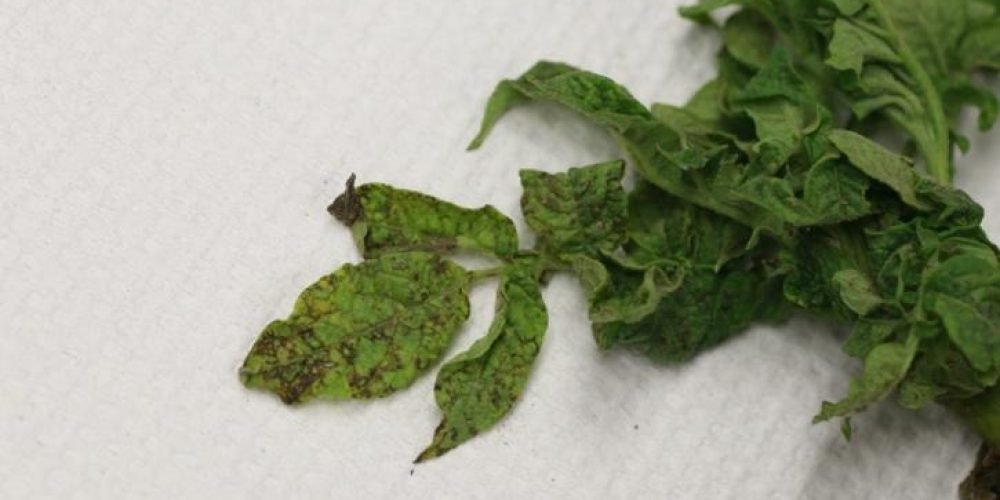Disease name: Potato leaf curl virus
The scientific name: Potato virus Y
The type of disease: viral
Viral family: Potyviridae
- the introduction:
Potato virus (PVY) poses a major threat to the global potato industry, causing production losses and affecting the quality of harvested tubers. In this article, various details will be presented, such as symptoms, causes of the disease, and treatment methods. It is necessary to explore the details of this viral infection, study its causes and treatment methods to provide farmers with the necessary knowledge for effective prevention and control.
- life cycle:
Potato virus Y (PVY) is transmitted primarily through vegetative propagation, potato tubers, and aphids. Once introduced into a potato field, the virus can spread rapidly through the plant's vascular system, affecting both leaves and tubers.
- Symptoms:
- Early symptoms: In the early stages of a PVY infection, plants may show subtle signs that the untrained eye can easily miss. These early symptoms include the appearance of irregular mottled patterns on the leaves, with discolouration of the spots. In addition, affected plants may exhibit moderate growth with slight growth retardation, and leaves may show signs of curling. These initial signs may not raise immediate alarms, but they are crucial indicators for early detection.
- Advanced symptoms: As the infestation progresses, symptoms become more noticeable and impactful on the overall health of the plant. Advanced PVY stages often appear with distinct necrotic rings on leaves, indicating areas of tissue death. Leaves may exhibit yellow pigmentation, a condition known as “leaf pallor,” which indicates disturbed chlorophyll production and nutrient absorption. Furthermore, the plant's growth becomes distorted, affecting both its structure and leaf size. Recognizing these advanced symptoms is crucial to implementing timely control measures.
- Characteristic symptoms: One feature of potato virus Y infection that distinguishes it from other potato viruses is the distinctive “tobacco mosaic” pattern on the leaves. This pattern resembles areas of green and dark mosaic, similar to the marks found on tobacco leaves infected with a similar virus. This unique pattern provides a visual cue that aids in rapid identification of PVY, facilitating rapid adoption of prevention measures. Farmers and agronomists often rely on this distinctive feature to differentiate PVY from other diseases affecting potatoes.
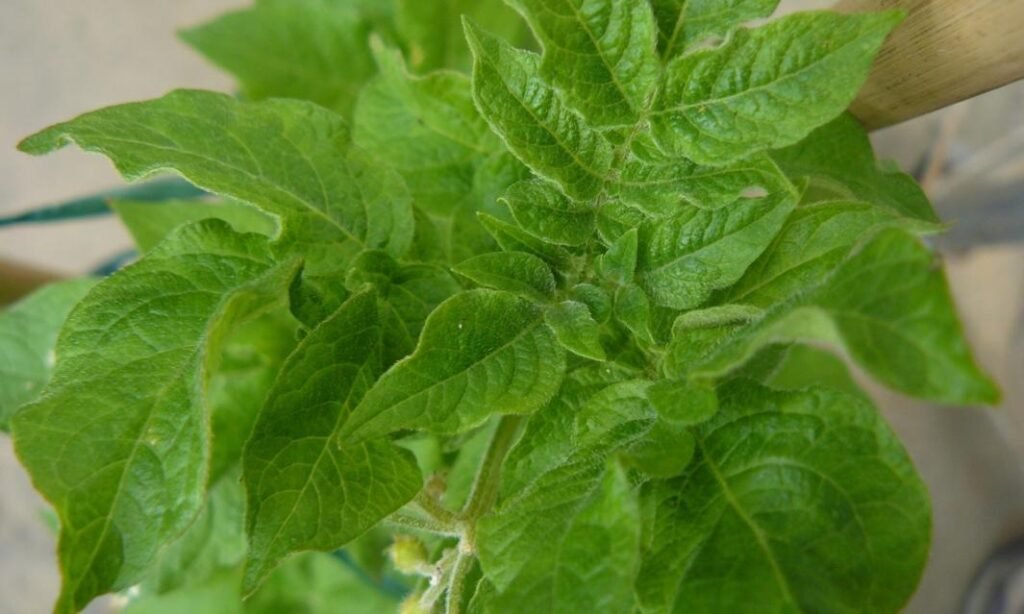
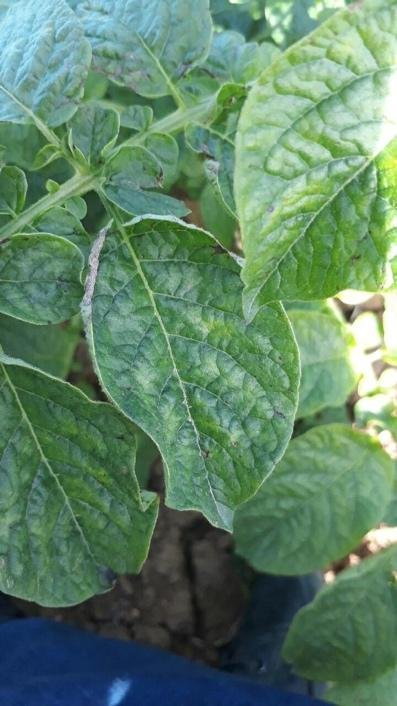
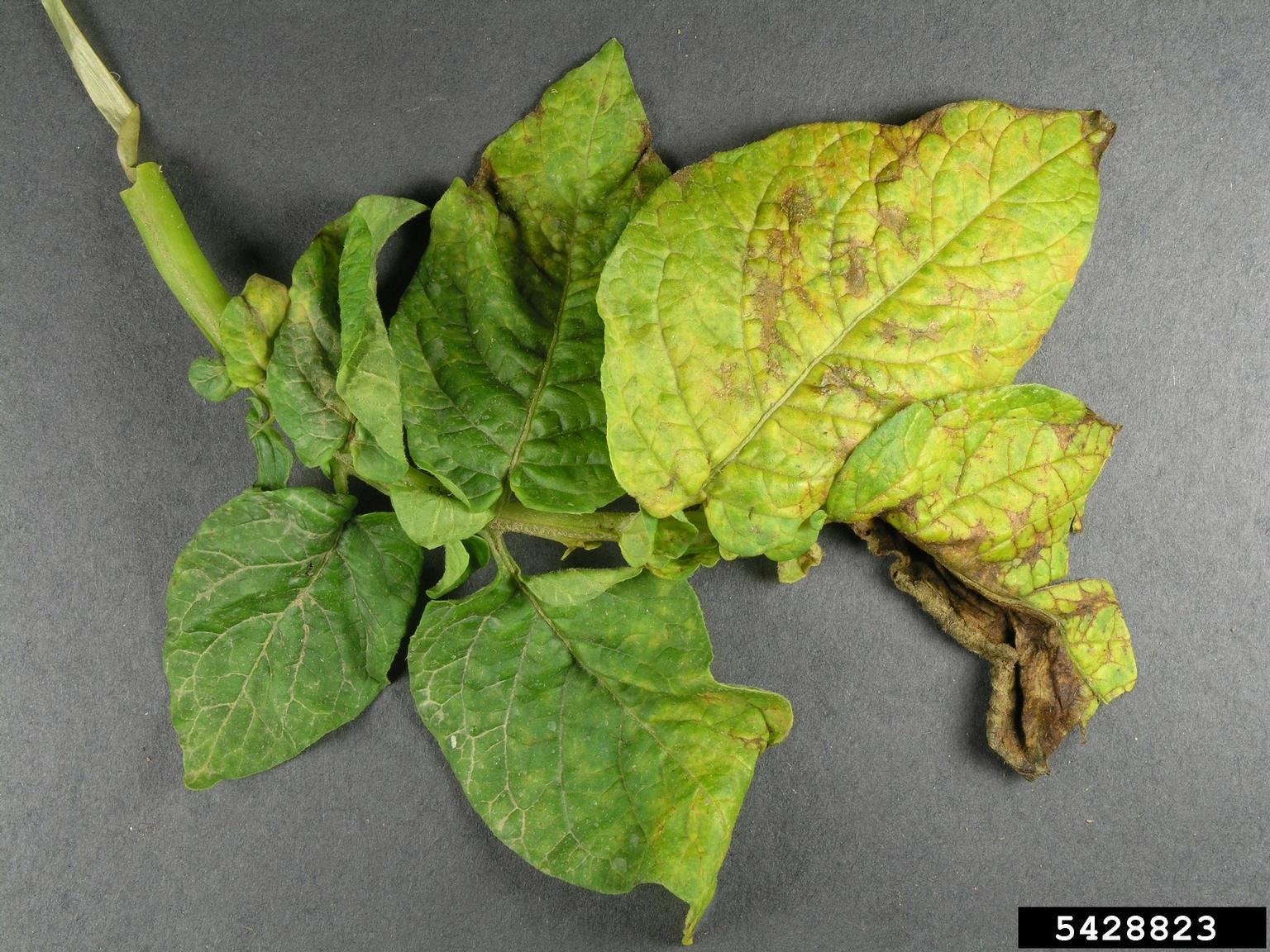
- Preferred conditions:-
- Temperature: Potato virus Y thrives at moderate temperatures of 20-25°C.
- Climate: It is commonly found in temperate climates but can adapt to diverse environmental conditions.
- Season: Infections most commonly occur during the growing season, with a preference for spring and summer when temperatures are favorable for virus activity and plant growth.
- Humidity: High humidity, which is common in spring and summer, can promote the spread of the virus via vectors such as aphids.
- Soil Conditions: Potato virus Y can persist in a variety of soils.
- Environment Preferences – Greenhouse vs. Open Field: The virus can spread in both greenhouses and open fields.
- The causes of disease: -
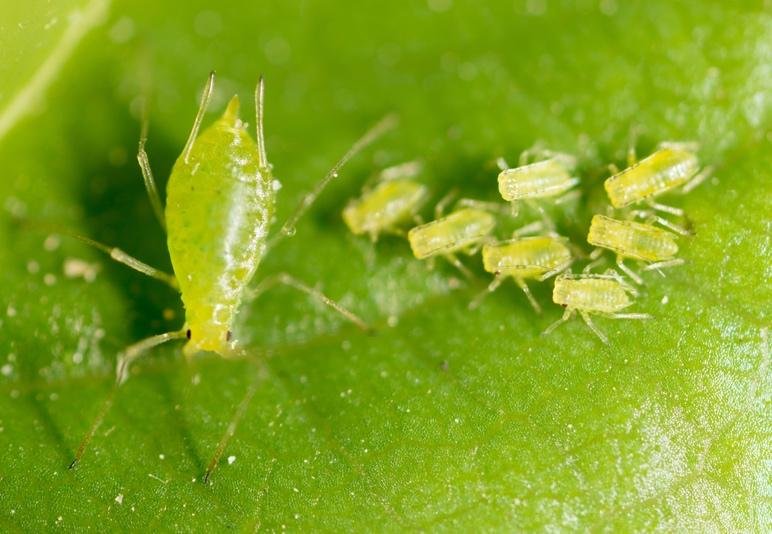
Aphids: Aphids transmit potato virus Y from infected plants to healthy plants.
Contaminated potato tubers: The use of tubers contaminated with the virus contributes to its spread.
Mechanically transmitted: Viruses can be spread by equipment and tools that accidentally transport them in the field.
Planting without crop rotation: Growing potatoes continuously without proper rotation increases the risk of infection.
- Losses from disease:
Potato virus Y (PVY) infections pose a major threat to the economic viability of potato cultivation, affecting the quantity and quality of production, which subsequently affects market value and overall profitability. Consequences of a PVY outbreak include: –
- Reduced production: One of the major effects of PVY infestations is a significant reduction in the overall production of potato crops. Affected plants experience stunted growth, loss of vitality, and incomplete tuber development. As a result, the total harvestable yield is significantly less than what would be expected from a healthy crop. This reduction in production translates into less availability for sale or processing, resulting in financial losses for farmers.
- Deterioration in quality: PVY affects not only the quantity but also the quality of potatoes harvested. Tubers from infected plants often show deformities, irregular shapes and defects, making them less attractive for the market. The virus can affect the taste, texture and appearance of potatoes, reducing their appeal to consumers and growing industries. Deterioration in quality increases the financial impact as farmers can face lower prices or rejection of their products in the market.
- Market value effect: The presence of PVY in potato crop can have a cascading effect on market value. As quantities are reduced and quality is reduced, potatoes may be valued at a lower level in the market. Consumers and processors may be reluctant to purchase potatoes with visible signs of PVY infection, affecting demand for the crop. The low market value translates directly into financial losses for farmers who may find it difficult to recoup their production costs.
- Profitability Challenges: The balance between reduced production, reduced quality, and reduced market value presents major challenges to the profitability of potato farming operations. Farmers may find it difficult to cover their production costs and achieve the expected return on their investment. Furthermore, financial pressure can extend into subsequent growing seasons, affecting the overall sustainability of the agricultural enterprise.
- Control strategy: –
A- Agricultural practices:
• Isolation: To prevent the further spread of potato virus (PVY), it is necessary to isolate infected plants from healthy plants by separating them from each other. This can be achieved by using barriers such as plastic films or by maintaining a safe distance between infected and uninfected crops.
• Cleanliness: Regular cleaning and sterilization of instruments is crucial to reduce mechanical transmission of the virus. This includes a thorough cleaning of tools, machinery, and any other equipment used in the field. A careful cleaning schedule helps prevent inadvertent virus transfer between plants during agricultural activities.
• Aphid barriers: Physical barriers can be used to deter vectors of the virus, which play a major role in transmitting PVY. Examples include installing mesh covers or row covers that prevent aphids from reaching potato plants, reducing the risk of spreading the virus.
• Crop rotation: Breaking the virus cycle can be achieved by crop rotation. Farmers can strategically plan crop sequences in the field, ensuring that potatoes are not constantly planted in the same place. This hinders the virus's ability to survive in the soil and reduces the likelihood of infection.
B- Chemical methods:
• Insecticides: Population control of aphids, the main vectors of PVY, can be achieved through the use of insecticides. Chemicals such as neonicotinoids or pyrethroids can be used to effectively target and manage aphid populations.
• Treating tubers: Treating tubers with chemicals is a preventive measure to eliminate the virus. Chemicals such as thiophanate-methyl or metalaxyl can be applied to potato tubers before planting, ensuring that the virus is not transmitted through the planting material.
C- Organic methods:
• Neem Oil: Neem oil, derived from the neem tree, acts as a natural insecticide and has a mild antiviral effect. It can be applied to potato crops to deter aphids and inhibit potato virus replication (PVY).
• Planting companion plants: Growing virus-resistant crops alongside potatoes is an organic strategy for controlling PVY. Companion plants such as thuja or beans can help repel aphids and create a diverse and robust cropping system.
• Biodynamic farming practices: Implementing holistic farming practices, such as enhancing soil health and enhancing biodiversity, can contribute to overall plant resilience. Techniques such as planting cover crops and fertilizing with compost support a balanced ecosystem, reducing potato exposure to PVY.
• Insect biological enemies: The introduction of natural pests of aphids, such as ladybirds or lacewings, can help control vector populations. These beneficial insects act as biological control, keeping aphid populations under control and reducing PVY transmission.
• Microbial enemies: Beneficial microorganisms, such as Bacillus thuringiensis (Bt), can be used to suppress viral activity. These microorganisms act on pests such as aphids and indirectly help reduce the spread of PVY.
• Virus-resistant potato varieties: Growing potato varieties with natural resistance to PVY is a biological approach. Examples include the development of genetically modified varieties with built-in resistance to the virus, ensuring a stronger defense against PVY.
• Biopesticides: The use of biopesticides derived from natural sources, such as entomopathogenic nematodes or fungi such as Beauveria bassiana, can be effective in controlling the spread of the virus. Biopesticides are environmentally friendly and specifically target pests, contributing to effective pest management in a sustainable manner.
- Preventive measures: –
• Certified potato tubers: The use of certified, disease-free potato tubers is an essential preventative measure against potato virus Y (PVY). Certified tubers undergo rigorous testing to ensure they are free of viruses, reducing the risk of introducing PVY into the crop.
• Quarantine measures: Implementing quarantine measures for new plant material is crucial to prevent accidental introduction of PVY. By isolating and monitoring new plant material before incorporating it into the field, growers can avoid introducing infected material.
• Early detection: Regular monitoring of plants and early detection of symptoms is key to controlling PVY. Implementing regular field checks and using technologies such as remote sensing can help quickly identify infected plants, allowing rapid intervention before the virus spreads.
• Crop diversity: Encouraging crop diversity is an effective strategy to break the virus cycle. Growing a variety of crops alongside potatoes hinders the ability of the virus to survive in the soil and reduces the likelihood of persistent PVY infection at the same site.
• Integrated Pest Management (IPM): Adopting IPM practices involves combining various preventative measures to manage pests and diseases, including PVY. This comprehensive approach combines agricultural, biological and chemical control practices, while promoting effective and sustainable pest management.
• Regular field inspections: Conducting regular field inspections by trained inspectors remains a crucial preventive measure. Trained inspectors can actively look for symptoms, assess the severity of injuries, and provide valuable insights for timely implementation of control measures.
- Conclusion:
In conclusion, understanding the life cycle, symptoms and control strategies of potato virus Y is crucial for the sustainability of potato production. By adopting a multi-pronged approach that combines physical, mechanical, chemical, organic and biological methods, farmers can mitigate the impact of PVY and protect their crops. Implementing preventive measures and ongoing education are essential steps towards building strong and productive agricultural systems.
- Sources: -
1. Jones, R. A. (2009). Plant virus emergence and evolution: origins, new encounter scenarios, factors driving emergence, effects of changing world conditions, and prospects for control. Virus research, 141(2), 113-130.
2. Gray, S. M., & De Boer, S. H. (1988). Potato virus Y. Advances in Virus Research, 35, 57-82.
3. Singh, R.P., Valkonen, J.P., Gray, S.M., Boonham, N., & Jones, R.A. (2008). Kerlan, C., Epidemiology, Virus Detection and Identification. In Control of Potato Virus Y: A Global Strategy (pp. 1-24). Springer.
4. Murphy, AM, & Carr, JP (2002). Salicylic acid has cell-specific effects on Tobacco mosaic virus replication and cell-to-cell movement. Plant Physiology, 128(2), 552-563.
5. National Potato Council. (https://www.nationalpotatocouncil.org/)
6. Plant Pathology Online. (https://www.plantpathology.net/)
7. International Potato Center. (https://cipotato.org/)
Photos:-
- https://www.ipmimages.org/browse/subthumb.cfm?sub=6949&area=116
- https://extension.usu.edu/vegetableguide/images/potatoes-images/24-PVY-on-potato-leaf.JPG
- https://i0.wp.com/www.potatonewstoday.com/wp-content/uploads/2020/02/PVY-symptoms.jpg?resize=2000%2C1200&ssl=1
- https://content.peat-cloud.com/w800/potato-y-virus-1.jpg
- https://cdn.claytonpp.com/wp-content/uploads/2021/04/shutterstock_772518421-1-scaled.jpg
